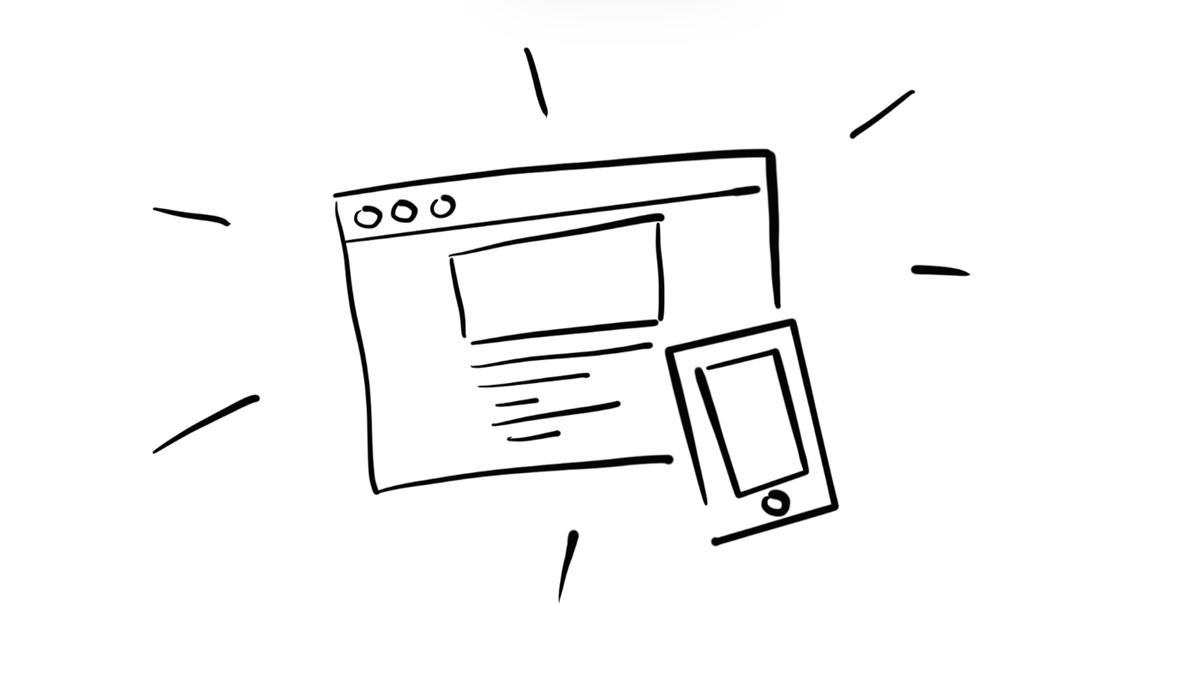Build Your First Website Without Losing Your mind
It’s never been easier to build a website. It’s also never been more confusing to get started either.

Originally published on February 27, 2022 in Medium
Introduction
It’s never been easier to build a website. It’s also never been more confusing to get started either.
There are more confusing terms around building websites than there are toppings for pizza. CMS, Squarespace, Wix, DNS, Server, Hosting, WordPress, Webflow, Joomla, HTML/CSS/JS, React… it’s enough to drive anyone crazy.
Well fear not, we’re going to explain all these in simple terms so you can get down to business. Ready? Let’s go.
There are two basic things you really need to think about when building your website:
- Your Website’s Name
- Hosting & Platform
Let’s take a look at each one.
1. Your Website’s Name
This is your dot com. It’s what people see on the search bar when they visit your website. We call this a domain. E.g. Google.com, Apple.com, or MyEpicWebsite.com.
Sometimes the words DNS (Domain Name System) and domain are used interchangeably. They are not exactly the same thing but neither are tarts and pies and we can all live with that.
To get one, you need to buy it from a registrar such as GoDaddy or Namecheap.
If you choose to go with one of the platforms we’ll see next, you can easily buy one directly with them. If not, I recommend Namecheap. Their customer support is great and also they are, well, cheap.
2. Hosting & Platform
Here’s where it gets bananas.
There are literally dozens of platforms to build websites. How do you choose one? Well, it depends on what your needs are.
To make it simple, I’m going to group them into categories and rate them based on how technically savvy you need to be to make them work. Let’s call it the Technical Insanity Score TSS™ and say it goes from 1 to 5, where 1 is a total “I can use Microsoft Word” and 5 is Jedi Master of Coding.
WYSIWYG — What You See Is What You Get
Notable examples: Squarespace, Shopify, and Wix.
Technical Insanity Score: 1/5
These are platforms that help visually design and build your website by dragging and dropping pre-built elements like menus, images, footers, etc.
They are the easiest ones to work with and have grown to support a lot of powerful features like e-commerce and blogging.
If you’re only interested in e-commerce, Shopify is the way to go. It’s been specifically designed for building online stores and IMHO it’s the best at it.
👍 The cool things about WYSIWYGs
- Easy to use and get started
- Look great
👎 The not so cool things about WYSIWYGs
- Not as customizable as other options
- In my experience, they can do weird stuff like glitchy animations
Content Management Systems
Notable examples: WordPress, Drupal, Joomla, Ghost, and Webflow.
Technical Insanity Score: 3/5
Content Management Systems (CMS) these are platforms that allow you to easily create, update, and delete pages and content on your website without having to mess with code.
WordPress
WordPress is by far, the most popular CMS in the universe. It’s a very mature platform with tons of plugins and templates to fit basically any need. Joomla and Drupal were also very popular at some point but WordPress is now the king with 54% of the market share.
Considered the behemoth of popular CMS’s, WordPress continues to lead the market by a wide margin. In terms of the entire Internet (websites built with or without a CMS), 35.6% of them are WordPress websites.
👍 The cool things about WordPress
- Free!
- Robust and flexible
- There are plugins for everything you may need
- You can easily find affordable devs to help you build and maintain it
👎 The not so cool things about WordPress
- If you’re not careful, it can quickly become a plugin Frankenstein (slow and ugly)
Webflow
Technical Insanity Score: 3.5/5
My weapon of choice. Webflow gives you nearly the same flexibility of hard-written code but with what I consider it’s hands down the best WYSIWYG interface out there.
Webflow also has powerful blogging and e-commerce capabilities and tons of beautiful, professional templates. In fact, my very own personal website is built on Webflow.
👍 The cool things about Webflow
- The best compromise between code, CMS, and WYSIWYGs
- You can do pretty much anything with it
- Has powerful e-commerce and blogging features.
👎 The not so cool things about Webflow
- Not so cheap
- A bit of a learning curve even if you know HTML/CSS
Shopify
Technical Insanity Score 2/5
👍 The cool things about Shopify
- Free!
- Robust and flexible
- You can easily find affordable devs to help you build and maintain it
👎 The not so cool things about Shopify
- If you’re not careful, it can quickly become a plugin Frankenstein (slow and ugly)
Further reading
- Popular CMS by Market Share (Dec 2019)